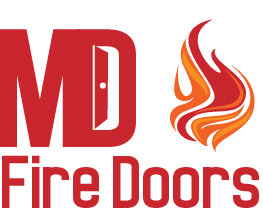Fire Doors and all passive fire protection products play a unique role in the fire safety of a building by containing a fire to a single compartment of a building and therefore reducing the risk to those in other compartments. Properly maintained fire doors should be a part of the fire safety plan for every building. When a fire door is installed, it should be done so with certificated components that will ensure it achieves its fire rating. Over time, without the correct maintenance, the fire door could fail so as part of your risk assessment, you should complete the maintenance checklist to ensure your fire doors are still in working order. You should then review and complete the checklist every 6 months for low usage buildings and every 3 months for high usage buildings
Fire Door Inspection Checklist:
Label: Has the fire door got a BWF-CERTIFIRE Fire Door scheme label on the top edge? If not, can you confirm that the door is in fact a fire door and has been certificated as such?
Door Leaf: Does the door leaf sit against the door stop and is it free of distortion? If the door is veneered or lipped, is the glue still holding these products firmly in place? Is the door free from damage including dents, and holes?
Door Frame: Is the door frame firmly attached to the wall? If a planted doorstop is present, is it firmly attached? Is the frame to door leaf gap consistently 3mm?
Intumescent/Smoke/Acoustic seals: Are intumescent seals in place? (if not install immediately) Are the seals well attached inside the groove in the frame or door leaf? Are the seals free from damage and paint? If you have a brush or fin type seal, is it free from damage or breakage? If fitted are the smoke and acoustic seals continuous around the frame or door leaf?
Hinges: Is there a minimum of 3 hinges with all the screws fitted? Are all the screws the correct size? Are the hinges free of metal fragments and oil leakage? (these are signs of wear) Are the hinges free from non-combustible packing?
Door Closers: Open the door to 5 degrees or 75mm. Does it close and engage with the latch? Is the closer securely attached to the door and frame? Is the closer free from damage and not leaking? If unlatched, does the closer hold the door in line with the frame and intumescent seal? If hung in pairs, do they close in line if both opened and released together? If hold open device is used, is it electronically released? Does the hold open device release the door when required?
Lock and Latch: Does the latch hold the door firmly in place without rattling?
Glazing and Glass: Is the intumescent seal continuous and attached to the glass and bead? Are the glazing beads well attached to the frame and free from damage? Is the glass free from damage and cracking? If the glass has been replaced, is it fire rated glass? If glazing panels are below 1500mm from the bottom of door, is the glass safety glass?
Threshold Gap: Is there a consistent gap under the door that allows it to swing without touching the floor covering? Is the door to floor covering gap consistently 10mm (3mm if smoke seals are fitted) or less when the door is closed? If the door leaf is fitted with a threshold seal, does the seal make contact with the floor covering when the door is closed?
To discuss your fire door requirements please contact MD Fire Doors.
We look forward to helping you.
